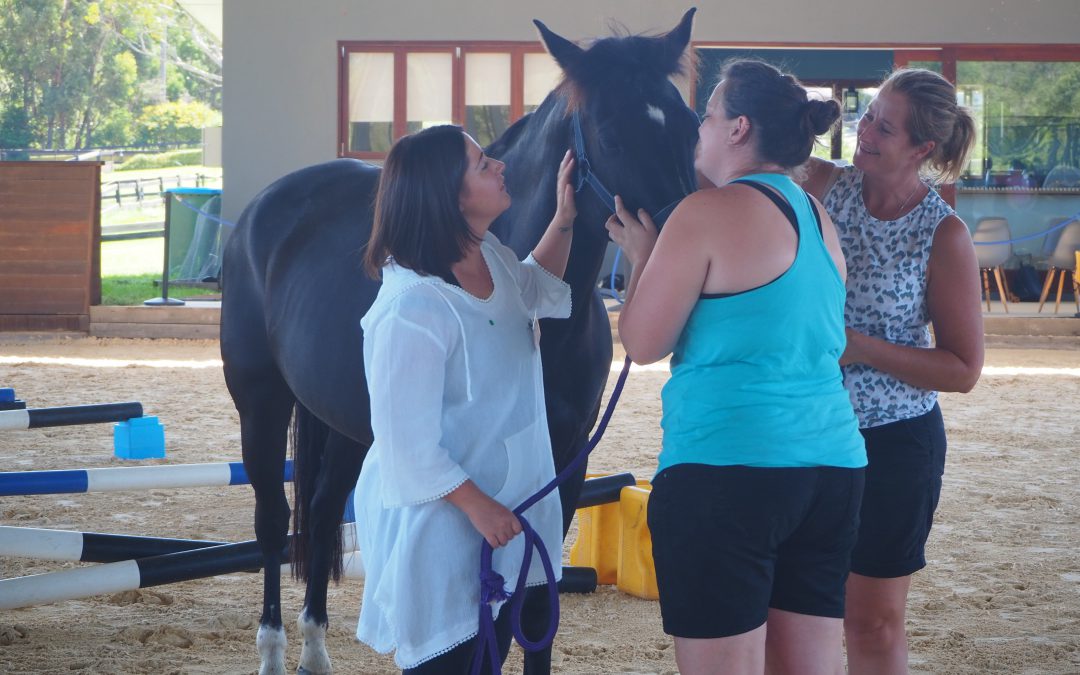It can be difficult and confronting to have honest conversations with others, particularly in the workplace. As a leader, being brave and understanding your communication style is one of the most important and ultimately rewarding exercises you can undertake. Facilitating honest talk in your team is a sure way to make the invisible visible and be an amazing leader.
One of the most important features of a great leader is the ability to pull what is hidden to the surface. This is both in our communication and dealings with others, but also – crucially – in being honest with ourselves. It’s also one of the hardest things to do.
Brené Brown, well-known research professor and social commentator, calls it “bringing to light the stuff that’s in the shadows and in the corners”.
I call it “making the invisible, visible”, and it’s something that I see a lot in working with horses, particularly in our leadership training.
You see, horses are not scared to show how you make them feel – not with words of course, but with their body language. This includes turning their heads, swishing their tails and stomping their feet. In the wild, horses communicate as a means to survive in a herd, and even domesticated horses retain this instinct. For them, there is no purpose in hiding anything.
Not the same with humans, though. Our complicated social contracts mean we tend to push down our feelings, particularly in workplace settings, and not prompt other team members to be forthright with theirs either. A recent study found that people often don’t speak up because of “interpersonal risks” and fear of being shunned. Interestingly, the study also looks at the consequences of a workplace where people don’t speak up, which includes harming our wellbeing and therefore contributing to burn out. People get exhausted when they’re not allowed to be their authentic selves.
That’s why working with horses to develop leadership skills is so helpful. They give honest and open feedback, and when a human team is working with them it’s difficult to stop those sentiments that have been bubbling below the surface from breaking free. Suddenly, people are braver about speaking up. They dare to have honest conversations. Leaders gain the courage to move unspoken problems into the open.
So, how can we challenge ourselves to have honest, visible conversations, encourage others to do the same and in the process be the best leader we can?
A full picture of yourself
We always begin the process of making the invisible visible with the difficult task of looking at ourselves. For us, this starts with a psychometric test, MiRo, which helps people understand their communication style and that of their teammates. There are four main types, and people are usually a combination of a couple. They are:
- Energiser – gregarious, creative, and agreeable
- Organiser – interested in wellbeing, stability and helping others
- Analyser – detail oriented and look to understand things rationally
- Driver – innovative, adventurous, rational and assertive
I won’t lie – the MiRo can be a confronting process. And so it should be, because we do not learn about ourselves while staying in our comfort zone. Real change involves being brave.
An assessment like this will show you a lot about yourself that is not apparent from inside your own head. And I guarantee anyone who goes through this process – whether with us or someone else – will be an amazing leader. You cannot hide from an assessment like that, and if you take the challenge, and face yourself honestly, then I guarantee you will be rewarded with leadership success.
*Please note: the individual taking the MiRo assessment, owns the assessment and results may only be shared with the individual’s consent.
Get help having honest conversations
If you feel there’s issues bubbling below the surface in your team, or an invisible problem that you cannot quite put your finger on, then I’d highly recommend getting some help. Sometimes, this outside influence, like our horses for example, is exactly what’s needed to shine light on these invisible problems so they can be solved.
As well as holding a mirror up to your own leadership, the MiRo will also help enable more open conversations with your team. It will help you to:
1. Understand how you communicate
For example, if you’re a driver you tend towards a more assertive communication style. If one of your team is an organiser, they probably like to maintain stability and harmony, so they may be hesitant to raise issues with you.
2. Understand how others communicate, so you can be more comfortable in speaking the truth to them.
For example, an analyser likes to have all the facts, so it it’s worth being prepared for that before embarking on a serious conversation with them.
3. Understand that some of the issues in your team stem from them, not something you did.
An energiser might have lots of great ideas, but own agreement nature could be holding them back from speaking up. In this case, it’s not exactly your leadership that’s causing things to remain invisible, but an amazing leader will find ways to help them.
If you’re interested in learning more about MiRo, please get in touch with me. Comment below or email info@leadingedgelifeskills.com.au. I’d love to have a chat.

